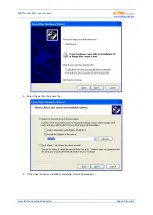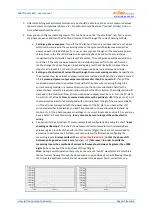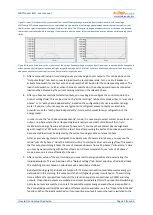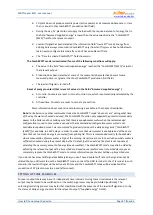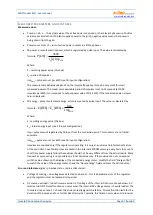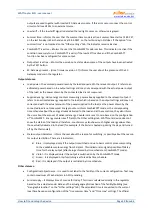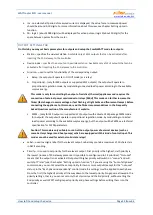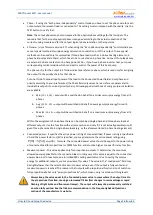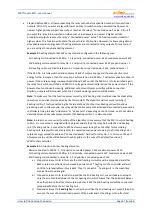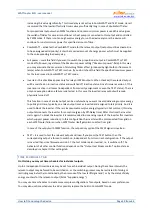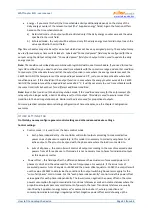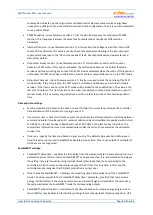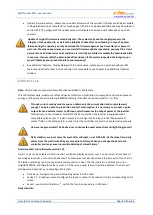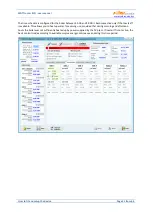
WATTrouter ECO - user manual
www.solarcontrols.cz
How to fit and setup the device
Page 36 from 66
Phase – if using the "Each phase independently" control mode you have to set the phase wire for each
output where the relevant load is connected to. The setting must correspond with the reality. Use the
TEST button to verify that.
Note:
The output phases may not correspond to the physical phase settings for the ILx inputs. The
reason is that for the inputs physical phase is assigned according to the actual connection of the
current sensing module and for the outputs logical phase in relation to the inputs ILx.
3f mode – (since firmware version 1.7) when using the "Each phase independently" control mode you
can set special method of surplus energy calculation to switch on or off this output. These special
methods can be used only for symmetrical three-phase loads (such as 3-phase heating elements, 3-
phase heat pumps and others), which have to be connected on 3-phase line. Connect those loads only
via external 3-phase contactor or 3-phase power SSR or, if you have 3-phase inverter heat pump, use
corresponding control module which can directly control the power of this heat pump.
The phase entry for the output in 3f mode indicates a
reference phase
, which is used only for assigning
the output to the priority chain for that phase.
Put one third of nominal input power of the load to the Connected Power field and set phase and
priority according to your preferences (the Phase field only serves here as reference parameter to
include this output into correct priority chain). Following special methods of energy surplus calculation
are available:
a.
Min (L1, L2, L3) – output will be switched on behalf on a minimum surplus energy from all 3
phases
b.
Avg (L1, L2, L3) – output will be switched on behalf on average surplus energy from all 3
phases
c.
Max (L1, L2, L3 – output will be switched on behalf on a maximum surplus energy from all 3
phases
Within the assignment of one phase there can be combined single-phase and three-phase loads at
different outputs. Use this function with extreme caution and only if it is not actually possible to split
given three-phase load to 3 single-phase loads (e.g. as the aforementioned 3-phase heating element).
Connected power - it specifies the active power rating of connected load. If power rating is specified in
VA and the power factor cos (Φ) is specified, you may determine the active power rating using
).
S[VA].cos(
=
P[W]
formula. The connected power value should be equal to the power rating
of connected load for proportional or PWM function, and must be higher or equal for relay function.
Maximum power – this value applies only for proportional outputs. It determines the maximum
allowed power applicable for the connected load. In many cases this value is equal to the connected
power value, but for example, due to limited SSR cooling possibility or due to saving the surplus
energy for additional outputs, you may decrease this value. The value in the "Load power"-field may
be slightly lower than the selected maximum power value, even if the output is fully excited and
maximum power is reached. The reason is that outputs with proportional function do not switch on
fully proportionally but only "quasi-proportionally", which means, only in certain switching levels.
Always keep the value equal to the Connected power value in cases where the output is set to
the proportional function, causing an increased flicker (fast changes in mains voltage or rapid
flashing of light bulbs and fluorescent lamps). The output will always be permanently switched
on when fully excited. See the flicker recommendation in the Frequently Asked Questions
section of the manufacturer's website.

